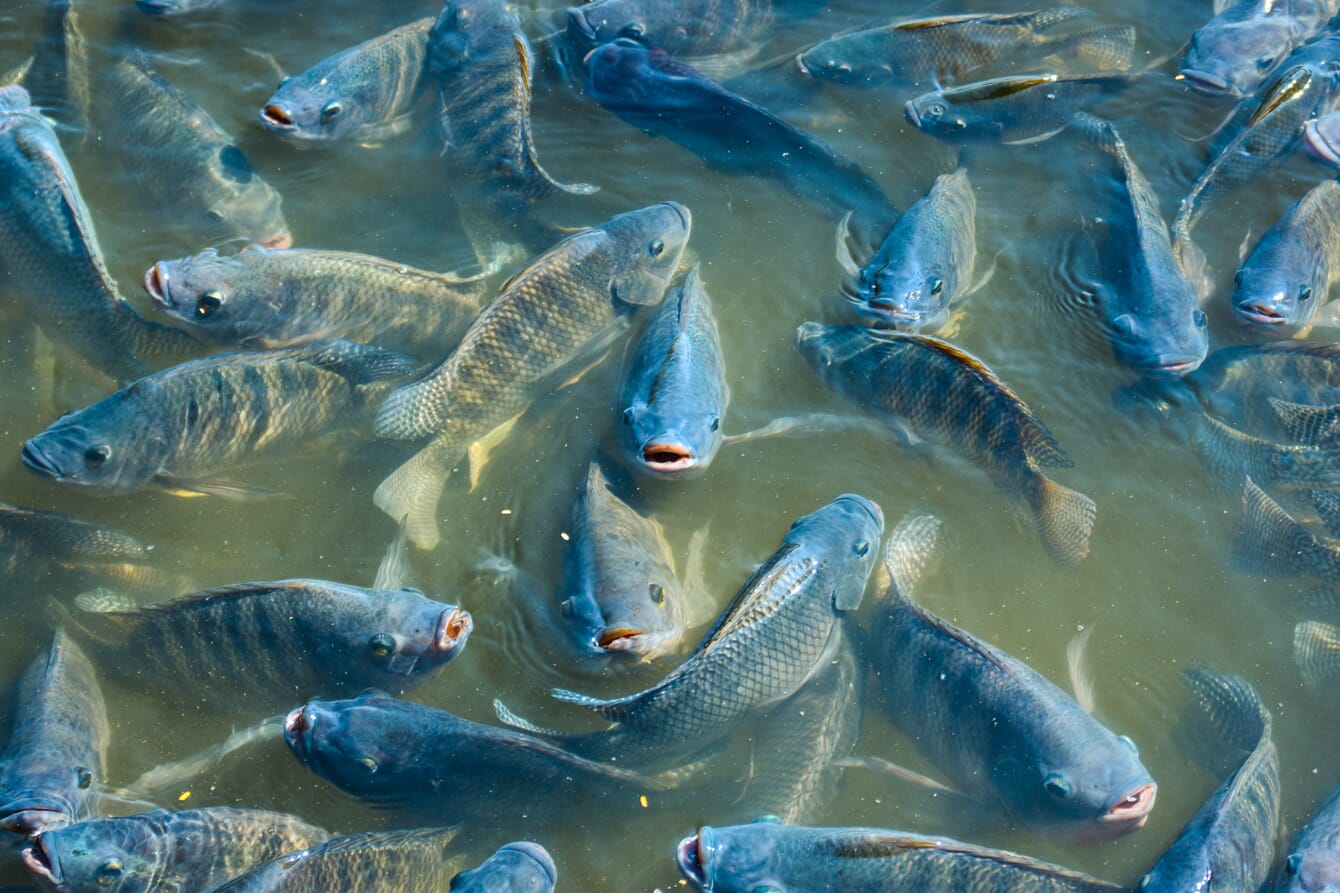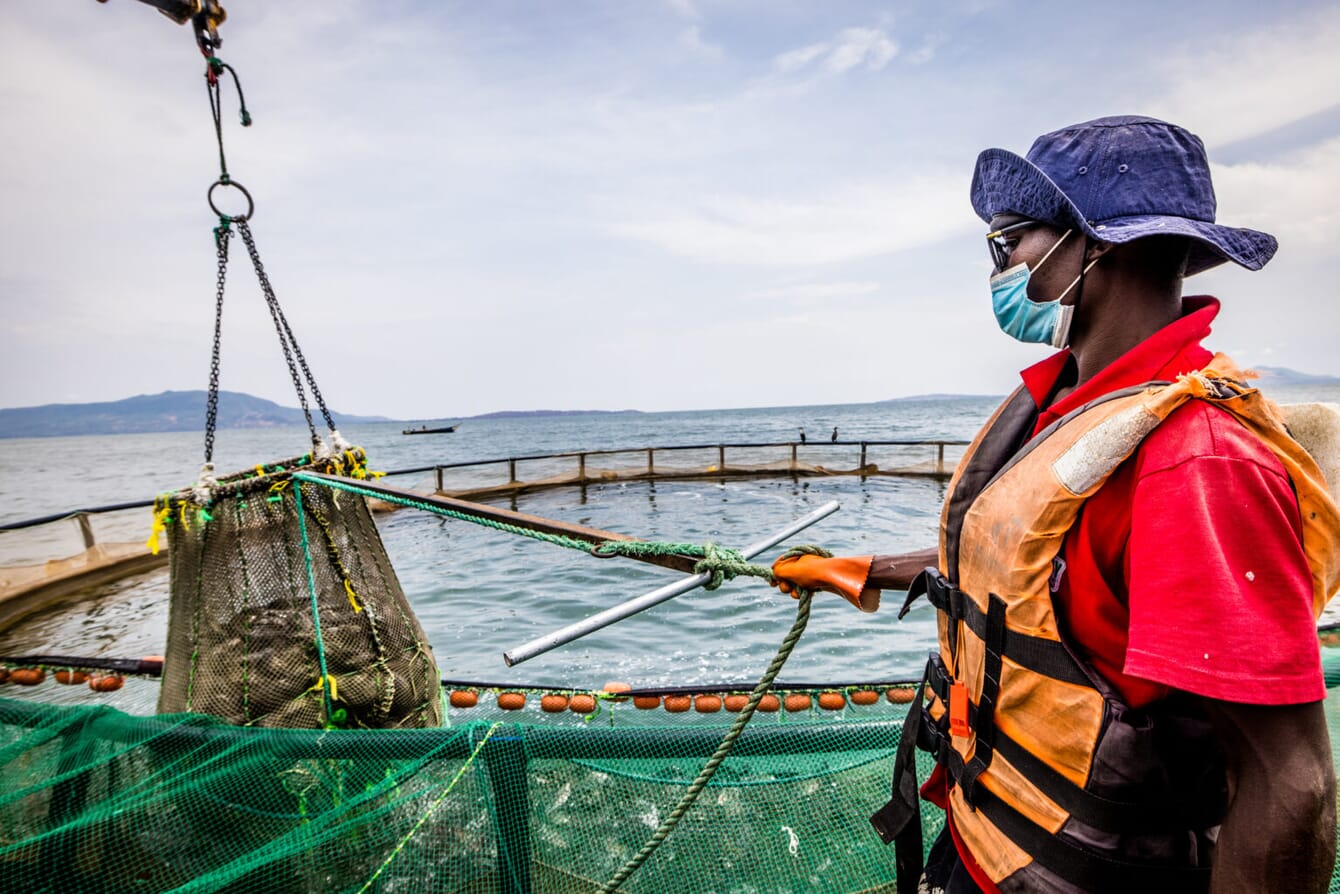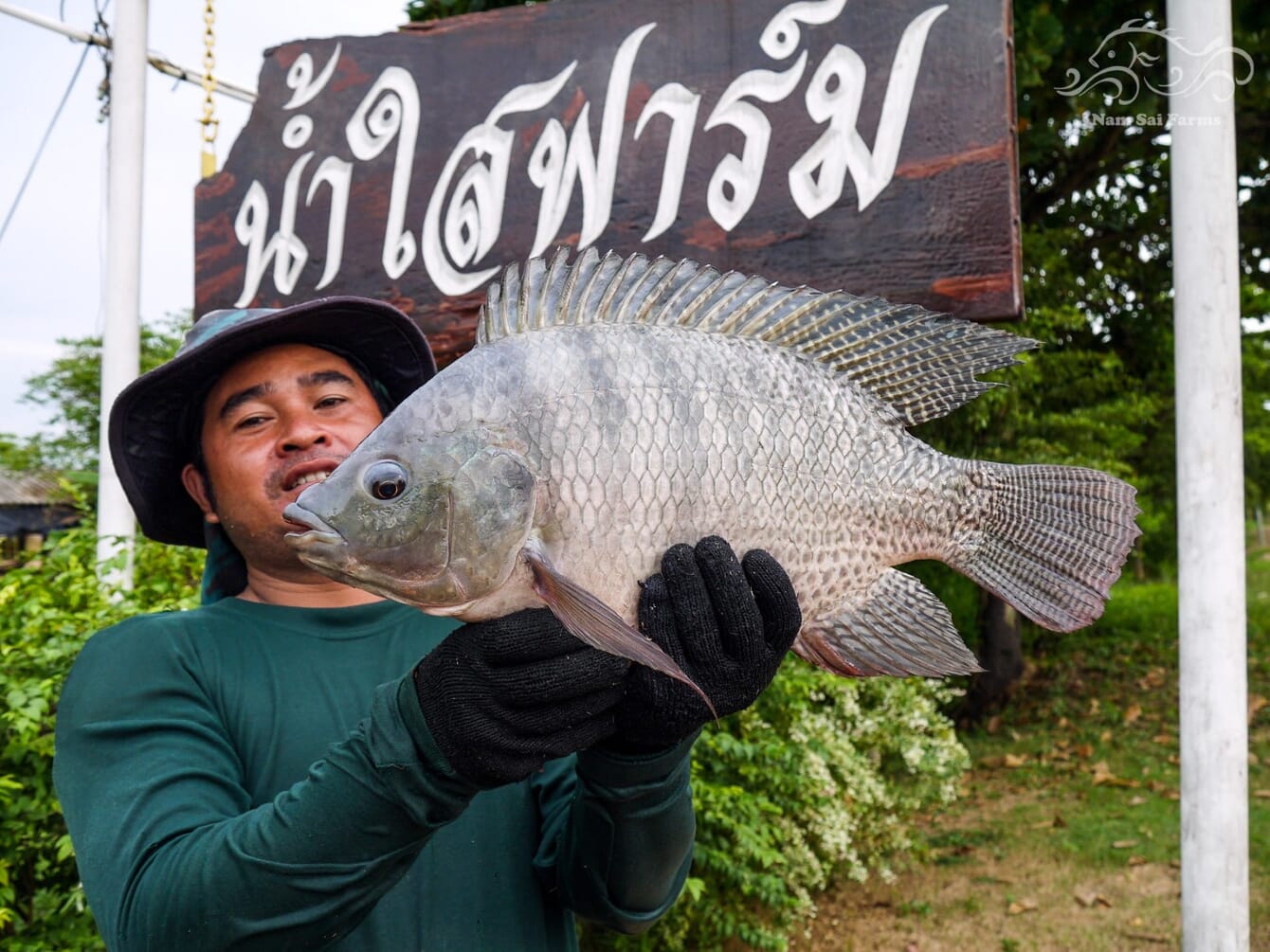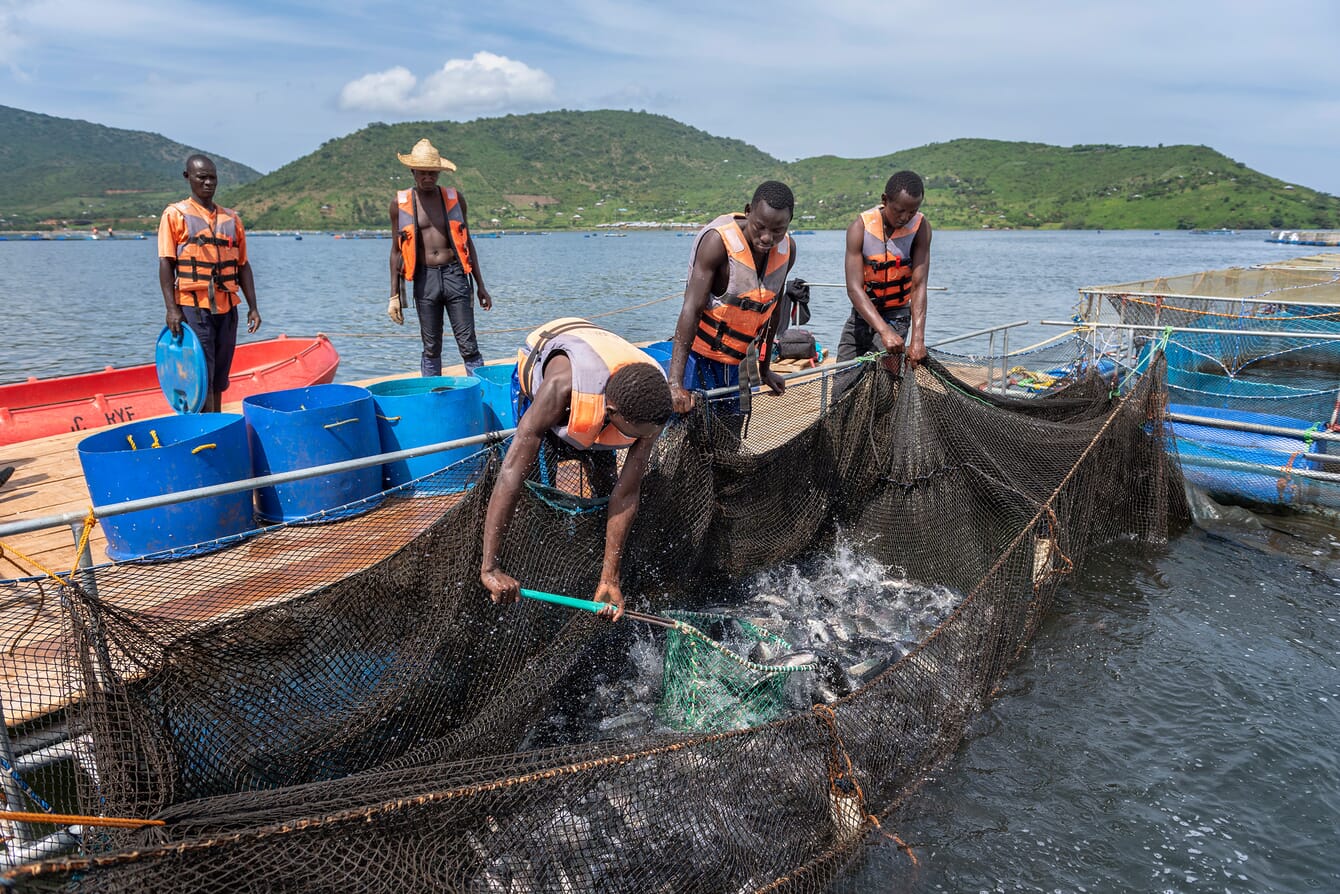
© Shutterstock
Background
Tilapia are the second most farmed genus of fish, after carps, with annual global production close to 7 million tonnes and rising. Much of this industry growth is occurring across Asia and Africa, where tilapia provide an important source of food, as well as a stable source of income for producers.
The use of mono-sex male tilapia stocks is widespread due to their higher growth rates, better feed conversion ratios (FCRs) and higher rates of survival compared to their female counterparts, leading to greater yields and improved financial returns.
Hormone treatment
Whilst mono-sex stocks can be created through manual selection of males – a method still quite common for smallholders – by far the most efficient and widely practiced technique is the artificially induced sex-reversal of female fry.
As tilapia fry do not possess developed gonads when recently hatched, the application of hormones associated with the development of secondary sex characteristics – most commonly androgenous steroids such as methyltestosterone – can be used to achieve what would appear to be a mono-sex population. Whilst this method does not alter genotypic sex, treated fish will express physical characteristics of the desired sex, such as the higher growth rates of male tilapia.
A thought-provoking new trial
Despite the popularity of mono-sex tilapia farming, and the prevalence of steroid-induced sex-reversal to achieve this, researchers from the University of Stirling’s Institute of Aquaculture recently published a paper researching the efficacy and feasibility of mixed-sex cultures in comparison to all-male stocks.
John Bostock, a research fellow at the Institute of Aquaculture and co-author of the paper explained the reasoning behind the study.
“Whilst the quantities [of steroids] involved are very small and result in no detectable increase in hormone levels in harvested fish, there are some regulatory barriers and ongoing concerns on grounds of welfare, staff, health and safety or environmental effects. As there have been genetic gains in the strains used in aquaculture – together with changes in feeds and culture systems – the team set out to revisit the need for using sex-reversed fry,” he explained, during a guest appearance on the University of Stirling’s HotFish podcast series.

© Victory Farms
The experiment
Seeking to investigate whether mono-sex stocks are still the best choice for tilapia aquaculture, the researchers collaborated with Nam Sai Farms – a Thailand-based tilapia producer – to conduct a field trial comparing the results of mono- and mixed-sex grow-out for Nile tilapia of the Big Nin strain, known for its high growth rate.
The cages were located in the Bambopong river to replicate common culture conditions and, due to the differing growth rates between males and females, different stocking densities were applied to the mono- and mixed-sex cages.
“Female [tilapia] grow more slowly than males, and are less efficient at producing meat, so we decided in two of the treatments to stock twice the density of fish assuming that if the sex ratio was one to one, after removing the females we would have the same number of male fish as in the mono-sex treatment,” explained Warren Turner, managing director of Nam Sai farms.
“During the start of the trial when the fish are quite small, we would expect that the impact from stocking twice as many fish would really be very small and have very little impact on the on the growth of fish to market size,” he added.
The trial showed that, whilst the female tilapia exhibited comparatively low growth – resulting in lower harvest biomass in the mixed cages, as expected – doubling the stocking densities in the mixed-sex cages resulted in a greater total yield.

© Nam Sai Farms
“Our results show that the cases where the females had been graded out at four and eight weeks showed very similar results in terms of the weight at harvest, the survival and the food conversion rate when compared to the hormone treated fish. We also did not see any differences at harvest on the fillet yield and the nutritional composition of the fillets so, from a production perspective, the removal of the females was really a successful strategy,” commented Amaya Alballat, senior lecturer at The Institute of Aquaculture.
“Although the mixed-sex strategies resulted in greater overall production from each cage, the extra costs incurred in fry and feed to double the stocking density for even four or eight weeks would not be recouped through the sale of the relatively small size fish. The market price of small fish is usually lower per kg than large fish, particularly in Thailand, so harvesting at a smaller size means that the cost of inputs is higher than the value that can be realised,” added Bostock.
Where can this be applied?
Following the field trial, the researchers created a financial model which replicated a standard tilapia farming enterprise, seeking to determine the financial viability of mixed-sex rearing. Given the current market prices for tilapia in Thailand, mono-sex farming remains the most profitable farming practice. However, the researchers observed, that if the producers could achieve an 8 percent premium for non-hormone treated fish, then the financial returns would be comparable.
“This may be more interesting for larger commercial producers that are targeting more sophisticated urban or international markets sensitive to messaging on production methods,” noted Bostock.

© Victory Farms
Another option for farmers to recoup losses made through mixed-sex rearing is the sale of females for broodstock, although the market demand for this service is not entirely reliable, Bostock added.
Despite the apparent unsuitability of mixed-sex tilapia farming for Thailand-based producers, the researchers concluded that the practice may be applicable elsewhere.
As they pointed out, in some areas of Africa, for example, there is a ready market for smaller female tilapia which, in some cases, can fetch prices per kg up to double those found in Asian markets.
Whether or not the practice of mixed-sex rearing will catch on amongst producers remains to be seen, but with follow-up studies already taking place in Kenya, the researchers clearly think it’s a strategy that’s worth pursuing.




